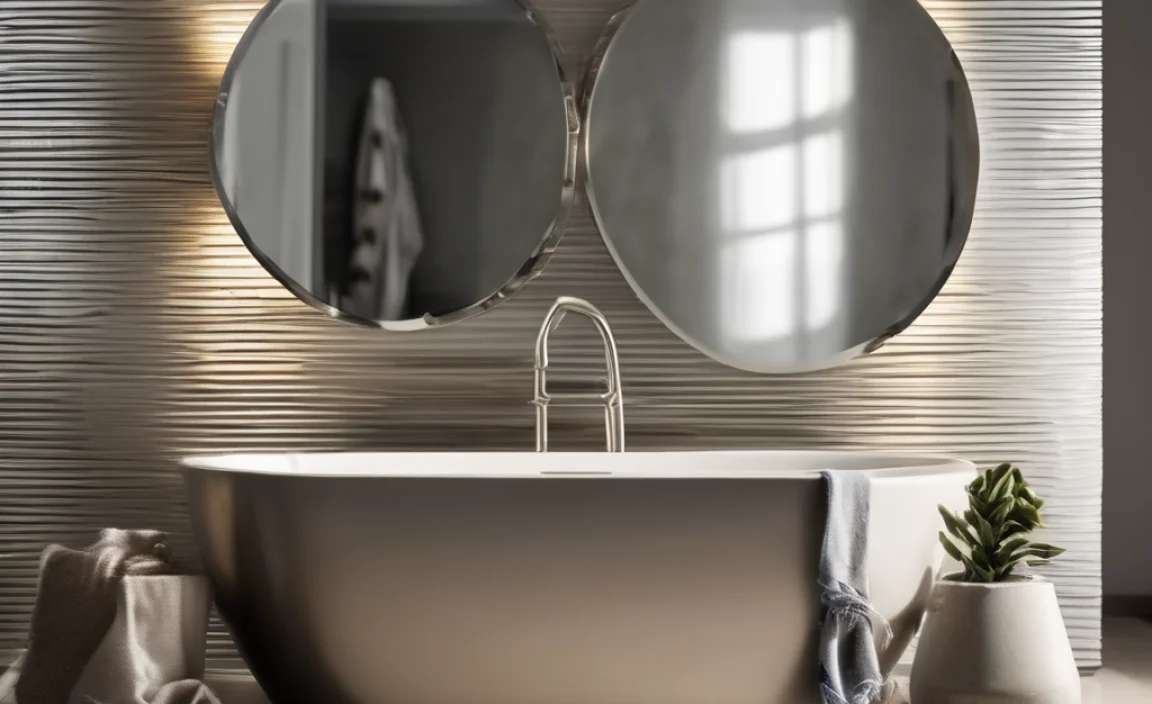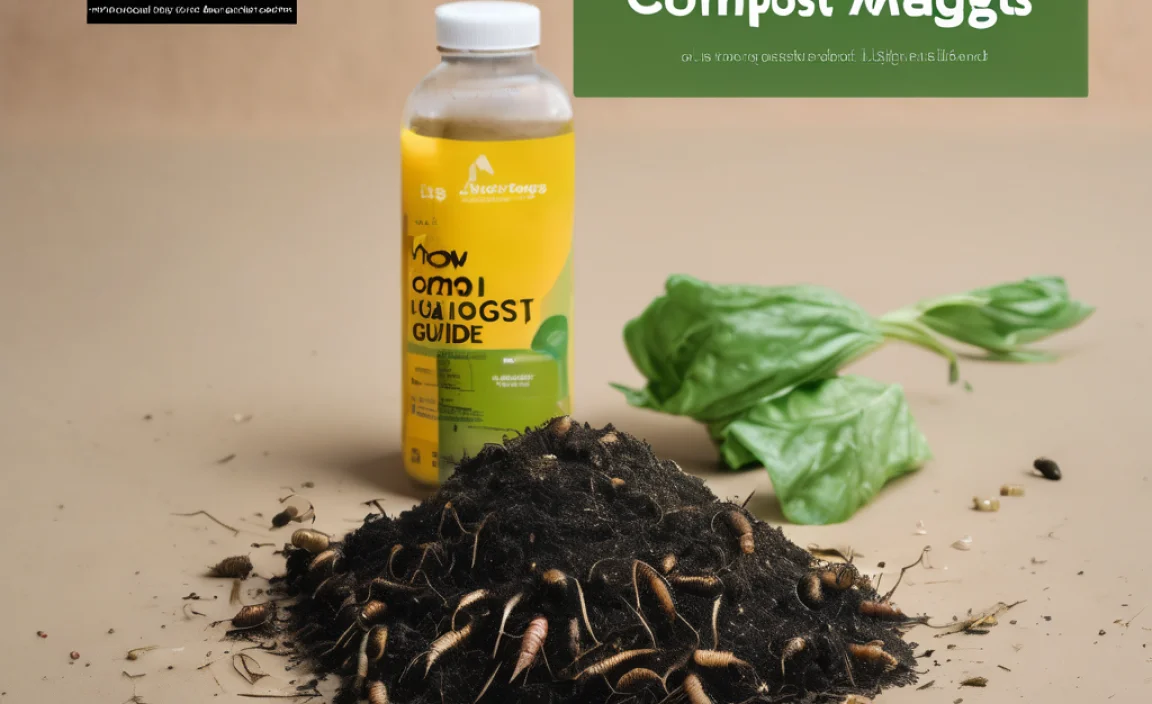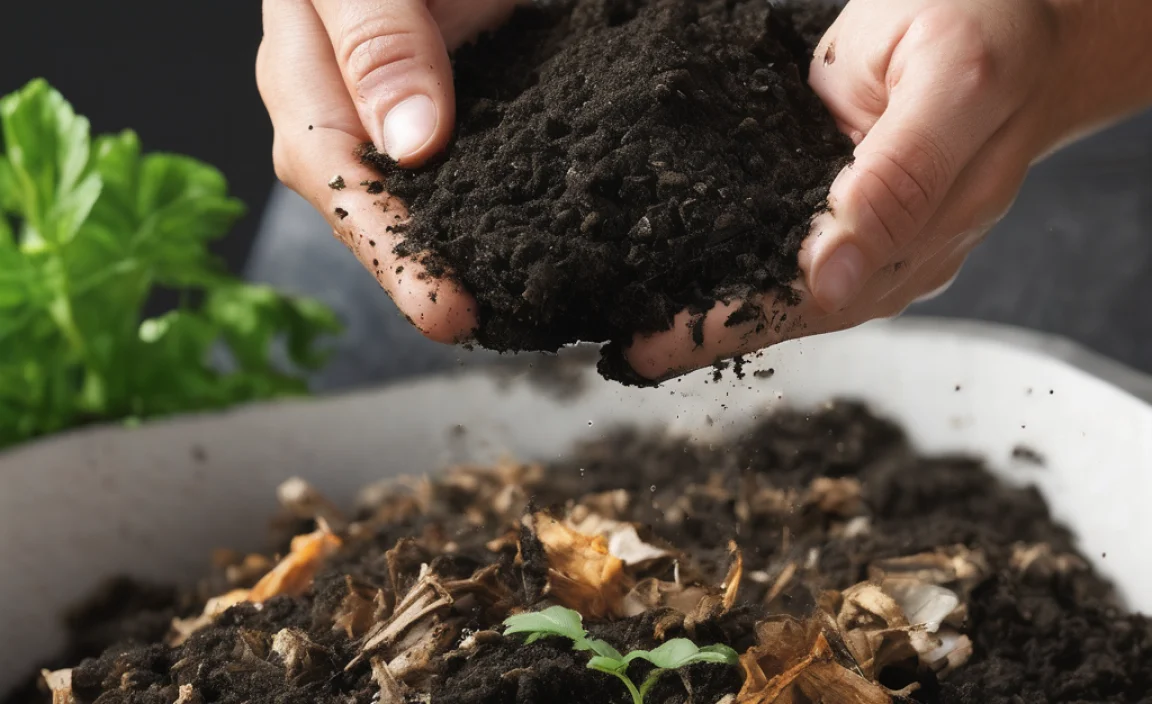How to Shine Brushed Nickel Like a Pro
Quick Summary: Shining brushed nickel is easy! First, clean the surface with mild soap and water. Next, use a soft cloth to apply a mixture of white vinegar and water or a commercial brushed nickel cleaner. Gently rub, rinse, and dry thoroughly. This will remove water spots and restore its subtle shine without scratching.
Brushed nickel fixtures look great in any home. But, over time, they can get dull or stained. Water spots and everyday grime can take away their luster. Luckily, bringing back their shine is a simple DIY task! You don’t need harsh chemicals or special skills. With a few household items and a bit of elbow grease, you can make your brushed nickel look like new again. We’ll walk you through each step, so you can shine your fixtures with confidence!
Why Does Brushed Nickel Need Shining?

Brushed nickel has a protective finish. This finish helps prevent rust and corrosion. However, it’s not immune to everyday wear and tear. Here’s why your brushed nickel might lose its shine:
- Hard Water: Minerals in hard water leave spots and build-up.
- Soap Scum: Soap residue creates a dull film over time.
- Fingerprints: Oils from your skin can cause discoloration.
- Dust and Grime: Everyday dirt can accumulate and reduce shine.
Regular cleaning and polishing can prevent these issues and keep your brushed nickel looking its best.
What You’ll Need to Shine Brushed Nickel

Before you start, gather these simple supplies. Most of them you probably already have at home!
- Soft cloths (microfiber cloths work best)
- Mild dish soap
- White vinegar
- Water
- Spray bottle (optional)
- Soft-bristled brush (like an old toothbrush)
- Brushed nickel cleaner (optional, but recommended for tough stains)
Step-by-Step Guide: How to Shine Brushed Nickel

Follow these easy steps to restore the shine to your brushed nickel fixtures. Don’t worry, it’s easier than you think!
Step 1: Initial Cleaning
Start by removing any loose dirt and debris. This prevents scratching during the cleaning process.
- Rinse: Rinse the brushed nickel surface with warm water.
- Soap and Water: Mix a few drops of mild dish soap with warm water.
- Apply: Dip a soft cloth into the soapy water and gently wipe the entire surface.
- Scrub Gently: Use a soft-bristled brush for hard-to-reach areas or stubborn grime.
- Rinse Again: Rinse thoroughly with clean water to remove all soap residue.
Step 2: Vinegar Solution (or Commercial Cleaner)
Next, use a vinegar solution or a commercial brushed nickel cleaner to remove water spots and restore shine.
Using Vinegar Solution:
- Mix Solution: Mix equal parts white vinegar and water in a spray bottle or bowl.
- Apply: Spray the solution onto the brushed nickel surface or apply with a soft cloth.
- Let it Sit: Allow the solution to sit for a few minutes (2-3 minutes is usually enough). The acidity of the vinegar helps break down mineral deposits.
- Wipe: Gently wipe the surface with a clean, soft cloth.
- Rinse: Rinse thoroughly with clean water.
Using a Commercial Brushed Nickel Cleaner:
- Choose a Cleaner: Select a cleaner specifically designed for brushed nickel. Look for non-abrasive formulas to avoid scratching.
- Apply: Follow the manufacturer’s instructions for application. Usually, you’ll spray or apply the cleaner with a soft cloth.
- Let it Sit: Allow the cleaner to sit for the recommended time (usually a minute or two).
- Wipe: Gently wipe the surface with a clean, soft cloth.
- Rinse: Rinse thoroughly with clean water.
Pro Tip: Always test the vinegar solution or commercial cleaner on a small, inconspicuous area first to ensure it doesn’t damage the finish.
Step 3: Drying and Polishing
Drying is crucial to prevent water spots. Polishing enhances the shine.
- Dry Thoroughly: Use a clean, dry microfiber cloth to dry the brushed nickel surface completely.
- Polish: Use a separate, clean, dry microfiber cloth to buff the surface. This will remove any remaining streaks and enhance the shine.
- Admire Your Work: Step back and enjoy your newly shined brushed nickel!
Dealing with Stubborn Stains
Sometimes, you might encounter stains that are harder to remove. Here are a few tips for dealing with stubborn stains on brushed nickel:
- Baking Soda Paste: Mix baking soda with a little water to form a paste. Gently apply the paste to the stain, let it sit for a few minutes, and then rinse thoroughly.
- Lemon Juice: Lemon juice is a natural acid that can help dissolve mineral deposits. Apply lemon juice to the stain, let it sit for a few minutes, and then rinse thoroughly.
- CLR Cleaner: CLR (Calcium, Lime, Rust) cleaner is a commercial product designed to remove hard water stains. Follow the manufacturer’s instructions carefully. Always test on a small, inconspicuous area first.
Safety Note: When using any cleaning product, always wear gloves and eye protection. Make sure the area is well-ventilated.
Maintaining the Shine: Prevention Tips
Preventing stains and build-up is easier than removing them. Here are a few tips to keep your brushed nickel shining longer:
- Wipe Regularly: Wipe down your brushed nickel fixtures regularly with a soft, dry cloth to remove dust and fingerprints.
- Dry After Use: Dry fixtures after each use to prevent water spots.
- Ventilate Bathrooms: Use the bathroom fan during and after showers to reduce moisture.
- Avoid Abrasive Cleaners: Never use abrasive cleaners, scouring pads, or steel wool on brushed nickel. These can scratch the finish.
- Apply Wax: Applying a thin coat of carnauba wax can help protect the finish and repel water spots.
Choosing the Right Cleaning Products
With so many cleaning products on the market, it can be tough to choose the right one for your brushed nickel. Here’s a quick guide:
| Cleaner Type | Pros | Cons | Best For |
|---|---|---|---|
| Mild Dish Soap | Gentle, readily available, affordable | May not remove tough stains | Everyday cleaning |
| White Vinegar | Natural, effective for hard water stains, affordable | Can have a strong odor | Hard water stains, mineral deposits |
| Commercial Brushed Nickel Cleaner | Specially formulated, may contain protectants | Can be more expensive | Tough stains, protecting the finish |
| Baking Soda Paste | Gentle abrasive, natural | Can scratch if used too vigorously | Stubborn stains |
DIY vs. Professional Cleaning
For most homeowners, DIY cleaning is sufficient for maintaining brushed nickel fixtures. However, there are situations where professional cleaning might be necessary.
When to Consider Professional Cleaning:
- Extensive Damage: If your brushed nickel is severely stained, corroded, or damaged, a professional cleaning service may have the tools and expertise to restore it.
- Time Constraints: If you don’t have the time or desire to clean your brushed nickel yourself, a professional can handle the task quickly and efficiently.
- Specialty Finishes: If you have antique or delicate brushed nickel fixtures, a professional cleaner can ensure they are cleaned safely and properly.
Cost Comparison: DIY vs. Professional
The cost of DIY cleaning is minimal, as you likely already have most of the necessary supplies. Professional cleaning costs vary depending on the extent of the job and the location. Here’s a general comparison:
| Cleaning Method | Estimated Cost | Pros | Cons |
|---|---|---|---|
| DIY Cleaning | $5 – $10 (for supplies if needed) | Affordable, convenient, can be done on your own schedule | Requires time and effort, may not be effective for severe damage |
| Professional Cleaning | $50 – $200+ (depending on the job) | Saves time and effort, can restore severely damaged fixtures | More expensive, requires scheduling |
Common Mistakes to Avoid
To ensure you achieve the best results and avoid damaging your brushed nickel, here are some common mistakes to avoid:
- Using Abrasive Cleaners: Abrasive cleaners can scratch the brushed nickel finish. Always use gentle, non-abrasive cleaners.
- Applying Too Much Pressure: Scrubbing too hard can damage the finish. Use gentle pressure when cleaning.
- Leaving Cleaners on Too Long: Leaving cleaners on for extended periods can cause discoloration or damage. Follow the manufacturer’s instructions carefully.
- Not Rinsing Thoroughly: Failing to rinse thoroughly can leave behind residue that attracts dirt and grime.
- Using the Wrong Cloth: Using a rough or abrasive cloth can scratch the finish. Always use a soft, microfiber cloth.
Brushed Nickel vs. Other Finishes
Brushed nickel is a popular choice for home fixtures, but it’s not the only option. Here’s a comparison to other common finishes:
| Finish | Appearance | Durability | Maintenance | Cost |
|---|---|---|---|---|
| Brushed Nickel | Warm, matte finish with subtle brush marks | Good, resists scratches and water spots | Easy to clean, requires occasional polishing | Moderate |
| Polished Chrome | Shiny, reflective finish | Good, resists rust and corrosion | Shows fingerprints and water spots easily, requires frequent cleaning | Moderate |
| Oil-Rubbed Bronze | Dark, antique-looking finish | Good, resists scratches and wear | Easy to clean, requires occasional waxing | Higher |
| Stainless Steel | Sleek, modern finish | Excellent, resists rust and corrosion | Can show fingerprints and smudges, requires occasional polishing | Moderate to Higher |
Frequently Asked Questions (FAQs)
1. Can I use Windex on brushed nickel?
While Windex can clean glass, it’s not ideal for brushed nickel. It can leave streaks and may damage the finish over time. Stick to mild soap and water or a cleaner specifically designed for brushed nickel.
2. How often should I clean my brushed nickel fixtures?
Clean your brushed nickel fixtures at least once a week to prevent build-up. For high-use areas like faucets and shower heads, you may need to clean them more frequently.
3. Can I use steel wool to clean brushed nickel?
No! Never use steel wool or abrasive scrub pads on brushed nickel. These will scratch the finish and cause permanent damage.
4. Will vinegar damage my brushed nickel finish?
A diluted vinegar solution (equal parts white vinegar and water) is generally safe for brushed nickel. However, always test it on a small, inconspicuous area first. Never use undiluted vinegar.
5. How do I remove hard water stains from brushed nickel?
A vinegar solution is usually effective for removing hard water stains. For stubborn stains, try a baking soda paste or a commercial hard water stain remover.
6. Is it safe to use a magic eraser on brushed nickel?
Magic erasers are mildly abrasive and can potentially damage the brushed nickel finish. It’s best to avoid using them.
7. Can I use a car wax to protect my brushed nickel?
Yes, applying a thin coat of carnauba wax can help protect the finish and repel water spots. Just make sure to apply it sparingly and buff it well.
Conclusion
Shining brushed nickel doesn’t have to be a chore! By following these simple steps and using the right cleaning products, you can easily restore the shine to your fixtures and keep them looking their best. Regular cleaning and maintenance will prevent build-up and protect the finish, ensuring your brushed nickel stays beautiful for years to come. So grab your supplies, put on some music, and enjoy the satisfaction of seeing your brushed nickel sparkle!


